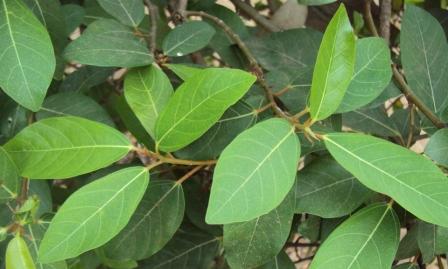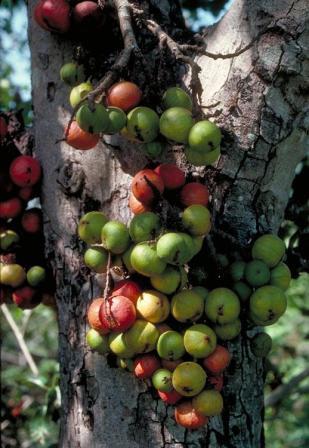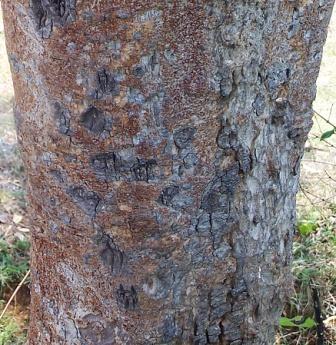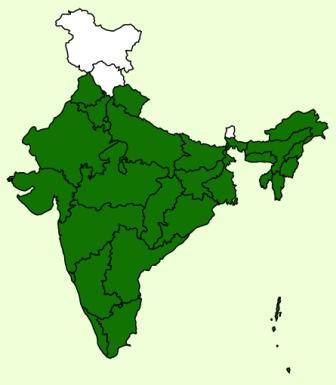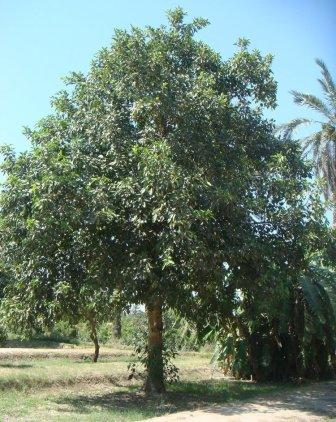Natural Regeneration :
- Naturally regenerates by seeds and root suckers.
Artificial Regeneration :
-
Propagated by seeds and vegetative cuttings
Seed collection and Storage :
- Fruits are collected and depulped and squeezed in water.
- The floating seeds are collected and dried on blotting paper in shade.
- The dried seeds are stored in a clean polybag.
Seed Treatment :
- Cold water treatment for 24 hours.
Nursery Technique :
- Seeds are broad casted in the mother bed mixed with sand and red earth.
- watering is done as on when required
- Germination starts in about 2 weeks.
- Tow leaf stage individual seedlings could be pricked out into a polybag Shade was provided for at least 1 weak after each transplanting. Seedlings were susceptible to over-watering until the final transplant.
Plantation technique :
- Planting out is carried out during July in 30 cm3 pits,
- Under dry conditions, pit size of 60 cm3 with an interval 5 to 10 m Planting should be carried out after the commencement of monsoon
Care & Disease Control :
- Regular weeding and soil working should be taken care.
Irrigation :
Responds well to irrigation however essential only during the first one or two years so as to ensure better establishment and quicker culm production. Moisture retention through trenches to be practiced.
Recommended Harvest :
Yield :
Rotation:10 years
Major uses :
Food:
- Figs are consumed as famine food during periods of food
Fodder:
- Its leaves are lopped as fodder for elephants, camels, goats and cattle; having about 10-14% crude protein. Silage prepared from the tree is palatable and digestible.
Fuel:
Timber:
- It is little used but is occasionally converted into packing cases, cheap boarding, yokes, spoons and bowls
Other uses :
Other Uses
Used as a rootstock for the common fig, Ficus carica. The bark contains tannin. The latex is used in the production of water-resistant paper and as plasticizer for Hevea rubber. The straw-coloured wood is coarse-grained, light in weight, soft, and porous. It is not a durable wood, though it lasts well under water, and hence is used for well frames. The wood is used for low-quality purposes and items such as minor construction, cheap furniture, packing cases, mouldings, laundry tubs, fruit crates etc,.
Carbon stock :
0.027 tC/tree


